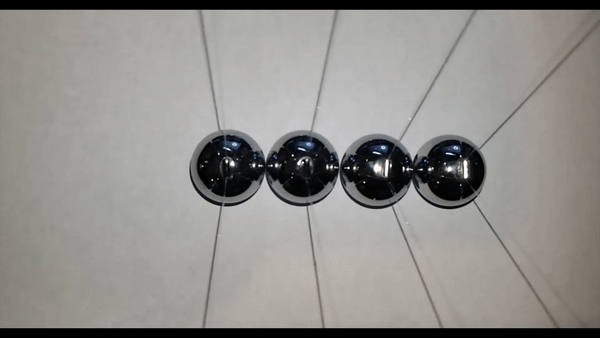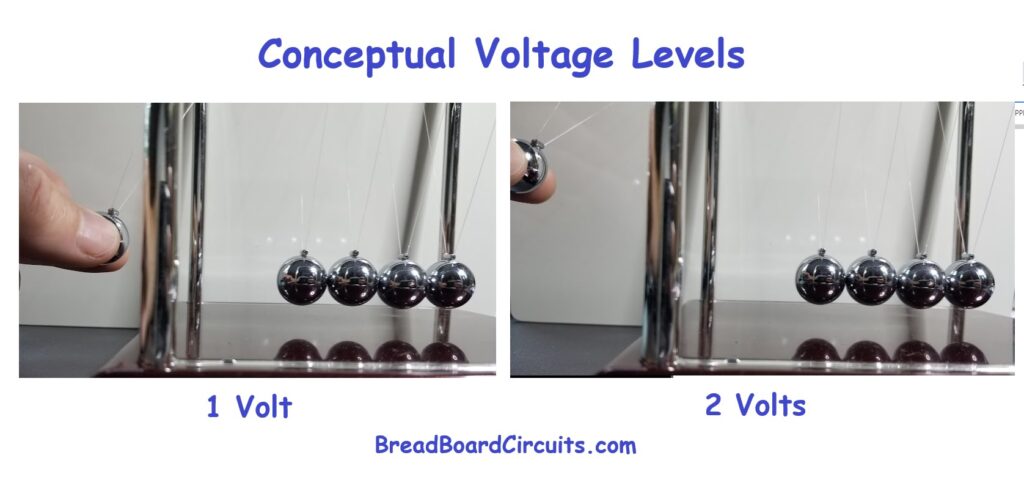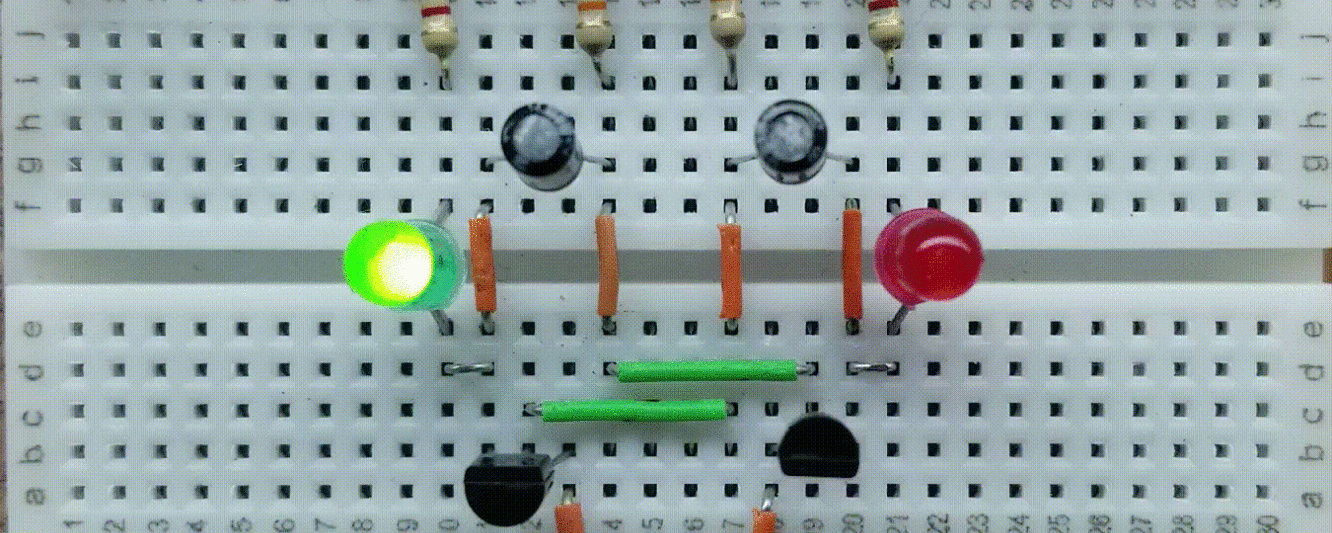What is Voltage?
Voltage is the electromotive force, charge, or pressure which tends to push electrons through a conductor such as a copper wire. Voltage is measured in terms of potential difference between two points. The higher the potential difference in voltage across a wire, the greater the pressure is to push the electrons through the wire. A 10 volt difference will push 10 times more electrons through that wire per second than one volt will. That flow of electrons is known as “current”.
Copper atoms have an outermost electron that tends to move freely to another atom – given the incentive. That is what makes copper such a good conductor. The incentive is voltage.
Referring to the image below, suppose you have a row of copper atoms side by side – representing a copper wire. You connect a battery to the wire with the negative terminal on the left side and positive on the right. In doing this, you are in effect applying a negative electrical potential to the first (left-most) atom and a positive potential the the last (right-most) atom. The first atom is forced to accept an electron from negative battery terminal – which causes that atom to become unbalanced.
That atom pushes an electron rightward to the second atom, which in-turn, accepts it and pushes one to the third atom. This happens (almost simultaneously), until the last atom has an extra electron, which (since opposites attract) it gladly pushes to the positive terminal of the battery. This process continues in a circle (hence the word “circuit”) until the battery is either disconnected or runs out of energy.

Although each electron travels relatively slowly through the wire (about 12 hours per meter), the above-described chain reaction causes the voltage potential at the other end of the wire to “appear” almost immediately. It doesn’t matter if the wire is a mile long. To understand this, think of the voltage as almost instantaneously appearing at the end of the mile long wire as a result of the electrons being “displaced”. This is opposed to just “traveling” through the wire. That way, you don’t have to wait until the first electron makes its way all the way to the end of that wire before the voltage appears.
To better understand how this chain reaction works, consider the Newton’s Cradle visual analogy below. The steel balls represent a row of free electrons in a copper wire connected to a battery. The left side is connected to the battery’s negative terminal and the right side, to the positive. On the left, electromotive pressure from the battery voltage pushes an electron into the row. On the right side of the row (or wire) an electron is almost immediately ejected towards the positive terminal of the battery. The positive terminal of the battery on the right didn’t have to wait for the first electron to enter the row. It quickly received a displaced one instead.
Note that the wire had 4 free electrons to start with and ended up with four in the end – the result being the same neutral charge it started with.

The magnitude of voltage depends on the level of relative charge. The higher the voltage, the higher the relative charge and the more potential there is to push the electrons through the wire. You can see in the image below that raising the ball to a certain height may represent “1 volt”. Doubling that height may represent “2 volts”. As you can envision, the higher the ball (electron) was (relative to the ground) when it was released, the harder it will hit the next ball. This causes it to more forcefully push the electrons through the wire.

The rate of flow of electrons caused by the voltage differences across the conductive wire, is referred to as “current”, and is measured in “amps”.
What is Current?
Simply put, current through a conductive wire represents the number of electrons that are being pushed (by electromotive force – voltage) through that wire per second. Current is measured in amps. One amp of current means that 6.24 x 10¹⁸ electrons are passing through a cross-section of the wire per second. That is a very large number – so the charge associated with that many electrons is referred to as one coulomb. A coulomb in this sense, is like a bucket of electrons. One amp of current is equal to one coulomb (bucket of electrons) passing through that cross-section of the wire per second.
By the way – although current actually flows from negative to positive, we will use conventional current flow, which assumes that it flows from positive to negative. This traditional convention is more intuitive and easier to work with.
As described by Ohm’s law, the current through a conductor is directly proportional to the voltage across that conductor. So if we have a wire with a voltage drop of one volt across it, and with one amp of current flowing through it, we know that one bucket (or coulomb) of electrons is flowing through that wire per second. If we raise the conceptual voltage as in the Newton’s Cradle example to 2 volts, then 2 coulombs of electrons will flow through the wire per second. This equates to 2 amps of current.
Also per Ohm’s law, current is inversely proportional to resistance of the wire in “ohms”. If we had the 2 amps of current flowing through the wire as in the above example, and double the wire’s resistance, we would be back to a current flow of 1 amp.
Summary
Voltage is the force which pushes charged particles through a conductor, or in the case of a copper wire, electrons through a wire. This force is measured in “volts”. There must be a difference in voltage across the wire for there to be a relative force to push the electrons. The higher the voltage difference, the more force there is pushing the electrons, and the greater the rate of electron flow there is. This rate of “flow”, is called current. Current is measured in “amps”. One amp means that 6.24 x 10¹⁸ electrons are flowing through a cross-section of the wire every second. That many electrons is also referred to one “coulomb” of charge.
Resistance impedes the flow of electrons. Resistance in the wire affects the rate of current flow. All conductors (except superconductors) have resistance. Even copper has resistance. A “resistor” is an electronic component that has a known “resistance”, which will impede current flow in a predictable way, based on Ohm’s Law. Voltage, Current and Resistance are all proportionally related as described by Ohm’s law, which is described in detail in this article.
For a better experience building breadboarded circuits, please see our page detailing the minimum recommended lab equipment for your electronics bench. Also, don’t forget to review the recommended safety procedures to follow when building and testing breadboarded circuits.
Finally, for other interesting breadboarded circuits please visit the home page here or our YouTube channel here.
We are a participant in the Amazon Services LLC Associates Program, an affiliate advertising program designed to provide a means for us to earn fees by linking to Amazon.com and affiliated sites.
